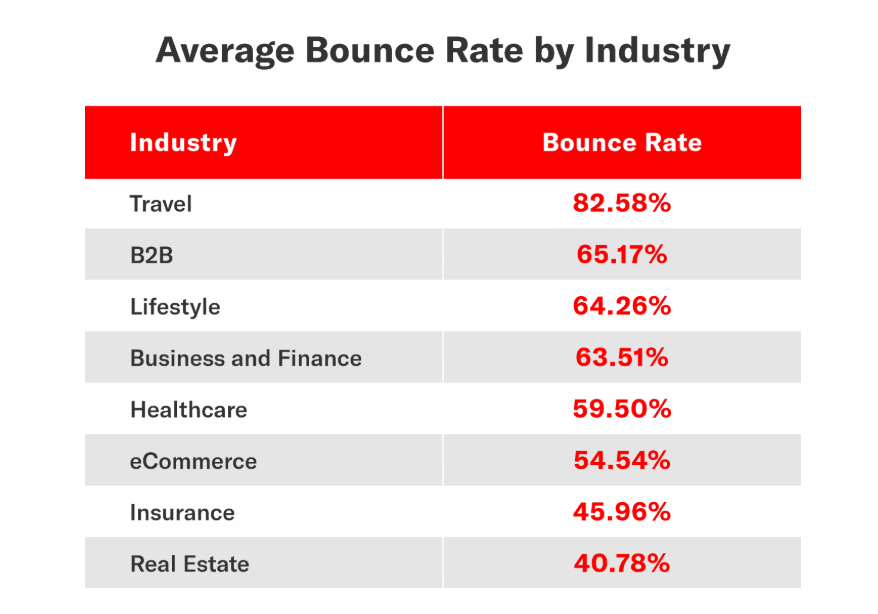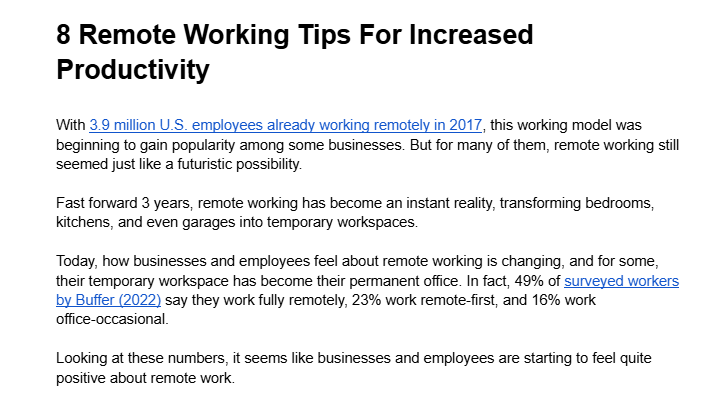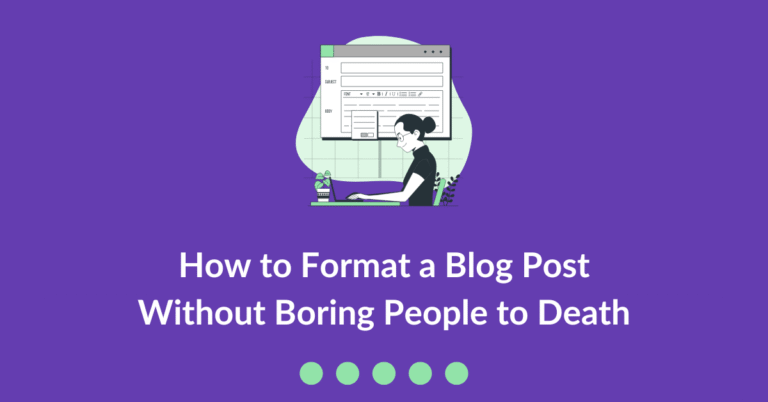Nine hours. Five seconds on-page. Here’s where I blew it.
10+ years in content, and I still missed the most obvious thing
I had nailed the outline. The formatting was fire. Research? Solid. SEO? Handled.
But readers bounced faster than I could hit refresh.
The post was dead on arrival. No scroll. No clicks. Just a quiet exit before the first paragraph even landed. Average time on page? Under 5 seconds. Nobody made it past the intro. I could’ve blamed the algorithm. The audience. Mercury in retrograde…
But the truth was simpler (and uglier): I lost 90% of my readers before they even scrolled. Not in paragraph four. Not halfway down the page. I lost them in the first five lines.
I’ve been doing this for over a decade—editing, optimizing, writing to rank and actually get read. But I still made the most rookie mistake in the book: I assumed people would care just because the content was solid.
And once I saw it, I couldn’t unsee it. The headline was soft. The opening felt safe. And the intro? All throat-clearing, no reason to stay. Because when intros fail, the rest of your post never gets a chance. You’ll see exactly what I mean in a minute.
Most blog posts don’t fail because the content is bad. They fail because the intro puts readers in a deep sleep. And mine did just that.
You get one shot. One paragraph to pull them in. One chance before they click out.
(Mom’s spaghetti? Optional. Tension? Required. Heya there, Eminem fans.)
Most of us blow it before we even realize it’s happening. We obsess over strategy, formatting, and SEO, and miss the real problem sitting in the first five lines.
It’s not that readers are impatient. It’s that intros keep giving them reasons to leave.
Table of Contents
ToggleThe brutal truth: Readers owe you nothing!
The internet is ruthless.
Readers don’t show up ready to love you. They show up with one finger hovering over the back button.
You’re not just competing with other blog posts. You’re competing with Slack messages, Netflix trailers, podcast notifications, YouTube shorts, and whatever weird TikTok the algorithm shoves in their face next.
You have seconds (at best) to prove you’re worth staying for.
According to recent data, the average bounce rate for blog posts still hovers between 60% – 80%, depending on the industry. Translation: Most people leave before the post even gets going.

Not because they’re lazy. Because most intros are boring, bloated, or irrelevant.
And that’s the real blogging mistake—thinking readers will stick around “just because.”
If you can’t make someone care almost immediately, it doesn’t matter how smart your content is.
They’re gone, and you don’t get a second shot.
The priciest intro blunder? Wasting your intro on filler like “In today’s digital world, content is king” instead of earning attention.
But weak intros aren’t the only reason blog posts tank. There’s a deeper issue behind most high bounce rates—and it starts before the first paragraph even lands. If your post opens with a shrug instead of a hook, you’ve already lost the click.
Let’s dig deeper.
Why blog posts fail before the first paragraph
Most blog posts don’t die because the topic was bad. Or because you didn’t cram enough keywords into them. They die because the first few lines didn’t do their job.
This is the blogging mistake nobody talks about—your intro isn’t just a warm-up, it’s a deal-breaker.
Let’s break down where it usually goes off the rails:
Mistake 1: Boring headlines
If your title sounds like something written by ChatGPT in “polite mode,” readers won’t even give you a shot.
Let’s compare these:
- “10 Blogging Strategies for Success” = snooze.
- “Why 90% of Blog Posts Fail Before the First Paragraph” = wait, am I one of them?
A good headline doesn’t just describe the topic. It builds tension before the reader even clicks.
Mistake 2: Wandering thoughts
If you take five sentences to get to the point, you’re already done.
Example of a wandering intro:
“Blogging has been around for decades, and many businesses today understand the value of sharing their knowledge online. In this article, we’ll explore why blogging is still important for your marketing strategy and what the most common blogging mistakes are.”
They’re already halfway through a TikTok by the time you hit “we’ll explore.” They’re not sticking around to hear you clear your throat.
A better intro:
“You can have a great product, a great team, and a great offer—but if your blog intro sucks, nobody’s sticking around to hear about it.”
Straight to the problem. No hand-holding.
Mistake 3: No clear promise
If readers don’t know what they’re going to get by the time they finish paragraph one, they’re not sticking around to gamble on it.
Bad example:
“In today’s digital age, content is king.”
Cool. Heard it 5,000 times already.
Better move:
“Most blog posts fail not because they’re wrong, but because they’re forgettable. Here’s how to make sure yours isn’t.”
You’re telling them exactly what’s at stake and what’s in it for them.
Mistake 4: Self-centered writing
Readers tune out the second you start with ‘At [Company Name], we pride ourselves on…’
Good intros talk about the reader’s world first. Not yours.
And that’s the deeper blogging mistake—assuming attention instead of earning it.
People don’t leave blog posts because they have short attention spans. They leave because the blog didn’t earn their attention in the first place.
And I know that first-hand.
Want to see what it looks like when a blog post makes all four of these mistakes?
I actually pulled up that 9-hour post last week. The content? Still decent. But the first five lines? Dead on arrival. No hook. No pulse. No wonder they bounced.
Even with 10+ years in content, I still blew it. Made every rookie blogging mistake I warn others about.
Experience doesn’t make you immune—it just means you know exactly how bad the mistake was. And how to fix it.
Here’s what that intro looked like:

A whole paragraph in… and still no clear problem, no tension, no reason to stay.
It wasn’t bad writing. It was just the usual mistake: scene setting, slow ramp-up, passive data, zero urgency.
It doesn’t start with a problem. It starts with a history lesson.
And it wasn’t just one mistake; it broke all four.
- Boring headline: flat, keyword-y, forgettable
- Wandering intro: five sentences in and still no point
- No clear promise: lots of setup, zero reason to stay
- Self-centered POV: focused on my angle, not their problem
A perfect example of what happens when you follow the usual “best practices” instead of writing like a human who actually wants to be read.
I wasn’t just being slow, I was being forgettable. Boring even. The intro set a scene instead of starting a conversation. And readers clicked out before I got to the point.
I would’ve done the same.
P.S. Here’s how I rewrote that intro to actually hold attention: How to Beat Remote Work Burnout. I blew it on the first try. But the second time, I nailed it.
P.P.S. Don’t let the word count fool you. This one hits harder and hooks faster than the last. It’s longer, but it earns every line. And it actually holds attention.
Still not sure if your blog intros are working? Here’s how to tell before the data slaps you.
How to diagnose if your blog post is failing early
You don’t need a $300 analytics tool to know when a post is sinking. You can feel it—if re-reading your intro feels like skimming a user manual, trust your gut. You’ve already lost the reader.
Here’s the quick gut-check:
- Headline test: Would you actually click on it if you weren’t the one who wrote it?
- First 50 words test: Do you know what problem the post solves within the first few sentences? (If you’re still warming up by word 75, you already lost them.)
- Reader-first check: Are you speaking to a real human’s problem… or talking about yourself?
These are the flags. Ignore them, and your bounce rate keeps climbing.
Simple rule of thumb: If you’re bored re-reading your own intro, imagine how a total stranger feels.
And if you’re already feeling queasy about a post that’s still in your head?
Good news: you’re not broken.
If it feels off already, it probably is. Better catch it now than bury the problem under 1,500 more words.
What does a great first paragraph actually do?
A strong first paragraph isn’t about “sounding professional.” It’s about survival.
Here’s what great intros pull off fast:
1. They create a tiny panic
There’s a problem. A gap. A missing piece.
The reader feels it, even if they can’t name it yet.
If your first few lines don’t stir a little anxiety or curiosity, they’re scrolling.
2. They make a promise
A reason to stay. Not a vague “this will be informative,” but a clear “you’ll learn how to fix X” or “you’ll see why Y keeps happening.”
If they can’t see the payoff by the end of paragraph one? They’re out.
3. They feel human
No corporate voice. No SEO-bait rambling.
Just one person talking to another person, and sharing their POV fast.
Great intros don’t explain. They connect.
Quick example:
Bad intro:
“In today’s business landscape, companies must embrace change to stay competitive. Digital transformation is no longer optional.”
Feels like reading a brochure nobody asked for.
Good intro:
“Half your team still hates your new software rollout—and you’re starting to wonder it’s not them, it’s the process. You’re not wrong. Let’s fix it.”
You feel the tension. You see the promise. You want to keep reading.
Most intros don’t fail because people “have short attention spans.” They fail because the writer didn’t give readers a reason to care right now.
If your first paragraph doesn’t earn attention fast, that’s not a soft start. It’s the beginning of the end. If it doesn’t hook, it doesn’t work. No matter what comes after. Classic blogging mistake we often overlook.
The fix: How to build a first paragraph that hooks
You don’t need magic, you just need a better starting line.
Before we dive into how to fix weak intros, let’s not forget what a bad one looks like.
My old remote work post started like this:
“With 3.9 million U.S. employees already working remotely in 2017, this working model was beginning to gain popularity among some businesses…”
It wasn’t wrong. It just wasn’t doing its job.
It started with history, not tension.
It stated facts, not problems.
It offered data, not a reason to stay.
The real blogging mistake? Believing readers need background before they feel the stakes. They don’t. They need a reason to care—fast.
So, how do we fix that?
Here’s how to build intros that actually earn attention:
1. Lead with tension, not a history lesson
Forget the “once upon a time.” Open with a line that drops readers into urgency, emotion, or discomfort.
People don’t lean into context. They lean into conflict.
Example:
Instead of:
“Content marketing is essential in today’s digital landscape…”
Try:
“You spent three months and $30k on content… and your blog traffic is still a ghost town. What went wrong?”
2. State the real problem fast
No scene setting. No philosophical musing.
Hit the core problem readers already feel in their gut, but maybe haven’t said out loud.
Example:
“Most blog posts don’t fail because they’re wrong. They fail because they’re forgettable.”
3. Preview the payoff, but don’t spoil it
Tease the answer. Don’t hand over the keys.
Curiosity first. Payoff second.
Example:
“In the next five minutes, you’ll know exactly why your blog intros lose people—and how to stop it.”
4. Cut the fluff. Early and hard
If your first paragraph has filler like “In today’s fast-paced world…” or “Blogging has become an important part of…” (secretly rolling my eyes), slash it.
Instead, try: “If no one’s reading your blog, it’s not the strategy—it’s the first 5 lines.”
Reader attention isn’t a renewable resource. You burn it, you lose it.
Writing great intros isn’t about being clever. It’s about being clear, fast, and real. And skipping this step is the most preventable blogging mistake in the book.
Respect your reader’s time from the jump, and they’ll actually stick around to hear what you have to say.
Let’s digest it: Good content respects the reader’s time
Readers don’t owe you a scroll. Not five paragraphs. Not five seconds. You either earn attention fast, or you lose it.
The first paragraph is your handshake. If it’s limp, forgettable, or buried in setup, the conversation’s over.
Most blog posts don’t fail because the ideas are bad. They fail because the intro didn’t earn the read.
I’ve been doing this for 10+ years — and I still blew it. Not because the content sucked, but because the first five lines didn’t pull their weight. I’d bounce too.
That blogging mistake reminded me of something I already knew but stopped practicing: Never treat the intro like a warm-up.
Now, I treat intros like a pitch. There’s even a sticky note on my screen that says: Hook them fast or lose them forever.
Moral of the story: A soft intro buries strong ideas. If it doesn’t hook fast, the rest won’t stand a chance.
Want to keep readers hooked after the intro, too?
Check out:
- How to Format a Blog Post for a structure that actually holds attention,
- How to Write a Blog Post Outline to start strong from the jump, and
- Copywriting vs. Content Writing because good intros start with the right goal, not just a good hook
Ema is a writer, editor, and content strategist with 10+ years of experience. She helps brands turn vague traffic goals into content that connects, not just ranks.



